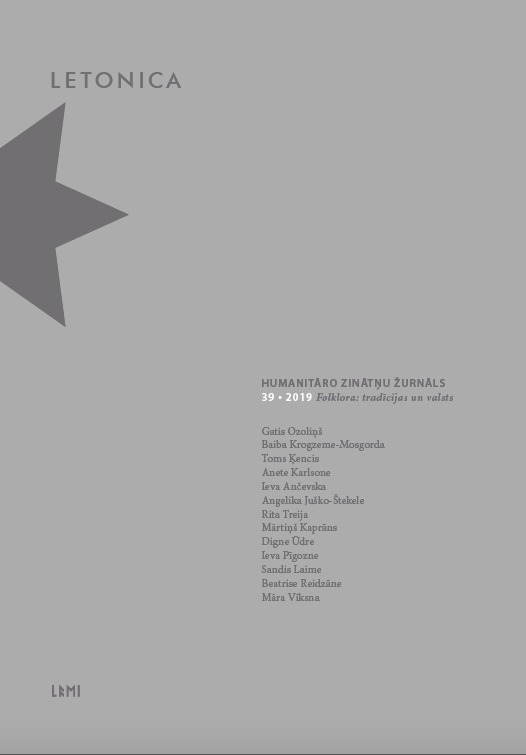The Symbol of the Morning Star During the Third Awakening in Latvia (1986–1991): From Cultural Opposition to Non-Violent Resistance
The Symbol of the Morning Star During the Third Awakening in Latvia (1986–1991): From Cultural Opposition to Non-Violent Resistance
Author(s): Digne ŪdreSubject(s): Theatre, Dance, Performing Arts, Semiotics / Semiology, Customs / Folklore, Visual Arts, Oral history, Post-War period (1950 - 1989), Transformation Period (1990 - 2010), Sociology of Art, Politics of History/Memory, Politics and Identity
Published by: Latvijas Universitātes Literatūras, folkloras un mākslas institūts
Keywords: folk ornament; the Morning Star; non-violent resistance; eco-nationalism; cultural opposition;
Summary/Abstract: In 2018 Latvians celebrated their centennial of the foundation of the Republic of Latvia. This was also a time to remember that after 50 years of the Soviet occupation, independence had to be regained in the late 1980s and early 1990s. This is the historical path that all three Baltic countries—Latvia, Lithuania, and Estonia—shared. Events of those days, both in popular discourse and scholarly literature, are referred to as the Singing Revolution, thus pointing to the non-violent nature of the revolution and the importance of singing in these national cultures. In Latvia, the years from 1986 to 1991 have been named “the Awakening” or “the Third Awakening”1 [Atmoda, Trešā Atmoda]. The Awakening is the name given to a number of political and social activities that embodied the longing to regain freedom lost after the Second World War, which became possible after the USSR’s general secretary, Mikhail Gorbachev, initiated the political reforms of perestroika and glasnost, leading to the restoration of the independence of the Republic of Latvia on 4 May 1990. As a non-violent resistance movement the Awakening involved many symbolic actions and symbols. The one that is probably the most recognized is the Baltic Way.2 Powerful visual images were used by the supporters of independence claims. However, the most potent of them besides the revival of the red-white-red flag (prior to Soviet occupation, the official flag of the state) was the regular eight-pointed star or octagram. The eight-pointed star or “Auseklītis”, “Auseklis” in Latvia, is the symbol of the Morning Star. This symbol, which descended from a folk ornament, in its graphic, geometric shape came to embody the hope of national awakening and a wish for political independence. The Morning Star is not only inevitably tied to the Awakening, but also has deeper roots within Latvian culture and tradition of folk ornaments. The importance of folk ornament in Latvia has been very visible in the last decade, especially in popular discourse, and there has also been a critical response from academia;3 nonetheless, the topic is somewhat stuck between esoteric, romanticized, and commercial interpretations. Based on in-depth interviews with participants and opinion leaders of the Awakening as well as published sources and public media materials, this article addresses the following questions: How did the Morning Star become a symbol of the Awakening? What meaning did it carry on a personal level for those involved in the processes of the Awakening?
Journal: Letonica
- Issue Year: 2019
- Issue No: 39
- Page Range: 149-176
- Page Count: 32
- Language: English

